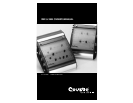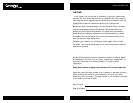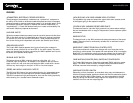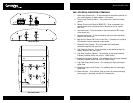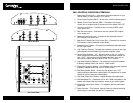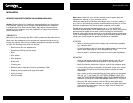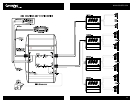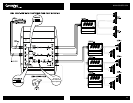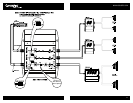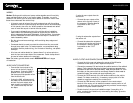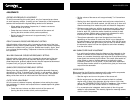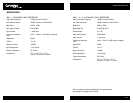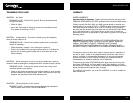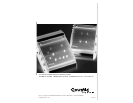
• Set the volume of the source unit to approximately
2
⁄3 of its maximum
output.
• Starting from their respective preset levels, adjust one output level at
a time. With each of the level controls, turn the level up or down until
distortion develops, then retrace the path until distortion disappears.
• Optimum output levels vary with the program source (radio, tape or
CD). If the optimum output levels for radio differ considerable from
those for tape/CD, locate the median levels that are best for both
program sources. (Before making output level adjustment for radio,
first locate a FM station with strong radio signals.)
• The optimum subwoofer output level changes from time to time,
depending on the volume of road noise, which in turn depends on
the vehicle speed, wind speed and road surface. With the XM series
Bass-Drive™ remote sub gain control port and the R S remote control,
the subwoofer output level can be adjusted as and when necessary
from the driver’s seat.
XM4 SUBWOOFER PHASE ADJUSTMENT
• In a mobile audio system where the distance of the subwoofer to the
listener is different from the distance of the midrange/tweeter to the
listener, an acoustical time delay might exist due to the different timing
these signals are received by the listener. The overall effect would be
either almost no bass or the bass seems to lag behind the highs
(commonly known as “out of phase”). If this is the case, experiment
with the phase inverter switch for a position that gives you more bass
output from the subwoofer.
NOISE CHECK
Before mounting the XM series crossovers and the other audio components
permanently, please conduct the following noise check:
• Start the engine and turn on the power of the source unit.
• Rev the engine and vary the audio volume to check for radiated
engine noise. If there is an alternator whining noise or tic-tic noise,
refer to the TROUBLESHOOTING GUIDE for assistance. If the problem
persists, consult your local Coustic dealer or Coustic directly.
• If no unwanted noise is detected, double check all the wiring and
cables for safe placement. Then securely tighten the mounting screws
of all the audio components.
WWW.COUSTIC.COM
21
ADJUSTMENTS
CROSSOVER FREQUENCY ADJUSTMENT
To avoid over-crowding the control panel, only four frequencies are shown
on each frequency selector. In reality you can choose any of the frequencies
between the lowest and the highest setting marked on the selectors.
• When setting the crossover frequencies, it is best to use source
materials with a lot of bass.
• Center the tone, balance and fader controls of the source unit
(leaving the other controls at their previous positions).
• Set the volume of the source unit to approximately
2
⁄3 of its
maximum output.
FRONT CHANNEL CROSSOVER FREQUENCY SETTING:
Adjust the fader of the source unit to increase the volume level of the front
speakers. Starting from the preset frequency, adjust the front channel frequency
downward or upward until you get your desired sound quality. Again, there
is no universal optimum setting. It depends on the size and location of the
front speakers.
XM4 REAR CHANNEL CROSSOVER FREQUENCY SETTING:
Adjust the fader of the source unit to increase the volume level of the rear
speaker. Just like setting the front channels, starting from their respective
preset frequencies, gradually adjust the rear channel frequencies downward
or upward until you get your desired sound quality.
SUBWOOFER CROSSOVER FREQUENCY SETTING
Starting from the preset 200Hz, gradually adjust the subwoofer frequency
downward to 120Hz. If the bass is still “boomy” or soft sounding, adjust it
downward even further until the bass sounds tight and deep. The optimum
setting varies from vehicle to vehicle and from individual to individual.
OUTPUT LEVEL ADJUSTMENT
As in the case of crossover frequency adjustment, when making the output
level adjustment it is best to use compact discs or cassette tapes with greater
dynamic range.
• Center the tone, balance and fader controls of the source unit
(leaving the other controls at their previous positions).



